This Highlanders Scottish Dirk has a sharpened blade of high carbon steel; its blade spine is thick and rigid to make it ideal for deep piercing attacks, though its long blade allows it to be a capable cutting weapon as well. The thistle-shaped grip is well carved wood embellished with brass nails and a brass bolster and pommel plate. A sheath of sturdy leather with durably stitched construction is included and the belt loop on the removable frog allows for easy wear.
An iconic weapon of the Highlander, the lengthy and rigid blade of the dirk was designed to easily pierce thick cloaks and woolen clothing and its notable blade length allowed it to be used in conjunction with a targe. A Highlander could both grip his targe shield and dirk in the same hand and the great length of the dirk allowed for the blade to protrude past the shield rim where it could be used to both prevent an enemy from closing as well as being used for strike of opportunity.
While swords were the reserve of wealthier clansmen who could afford them, nearly every man had a dirk. The universal nature of the dirk among the Highland Scots created a tradition of swearing oaths upon its blade- a tradition which may have been a holdover of Norse and Celtic origins whereby believed quality blades to be imbued with spirit and magic and were thus a focal point for interaction with the supernatural world. This oath-swearing on a dirk was taken very seriously and many oaths ended with proscriptions of terrible punishment upon the oath-sworn should they be broken.
This dirk has its grip formed in the shape of the symbolic thistle. Later examples of dirks often had a black wood used for this grip but such wood was an import. Most dirks in history would have been crafted from lighter colored local woods.
A matching Sgian Dubh for this Dirk is available separately and is linked with a thumbnail in the ”also available” section of this page.
Please Note: The grip wood color can vary from lighter brown to dark brown. The second photo displays a lighter brown grip as an example.

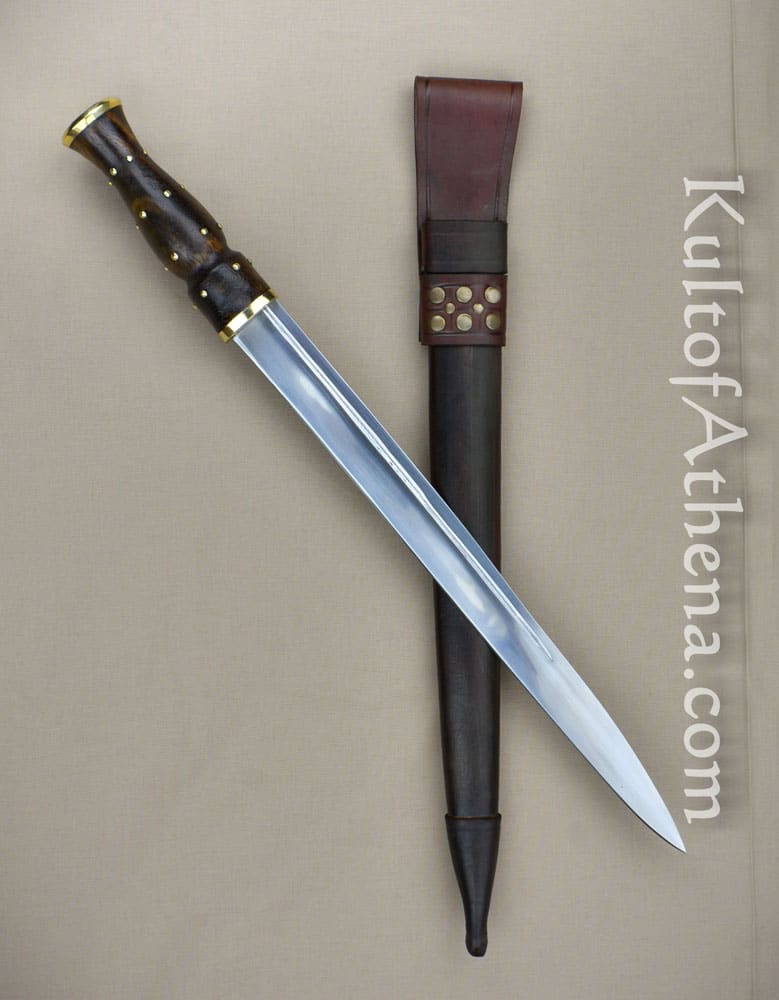
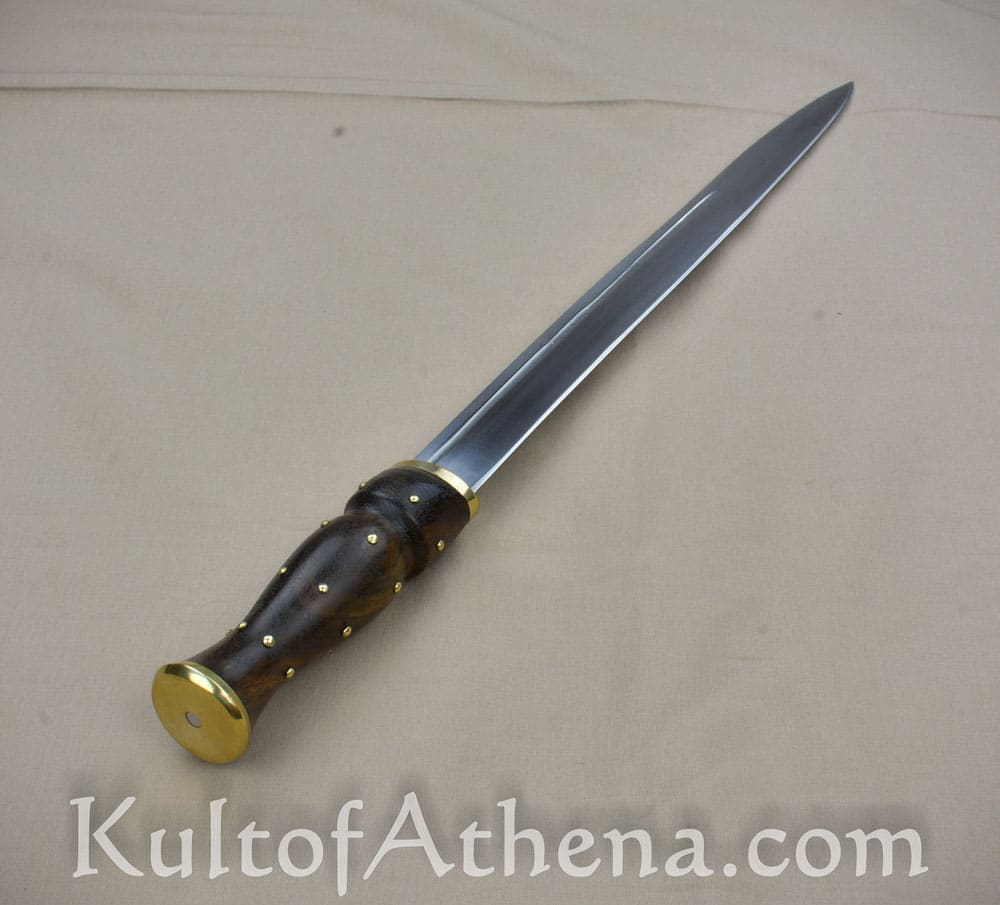

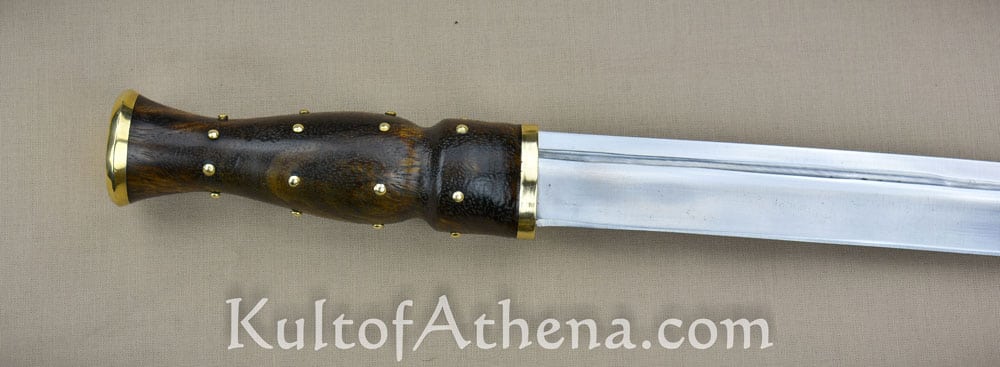
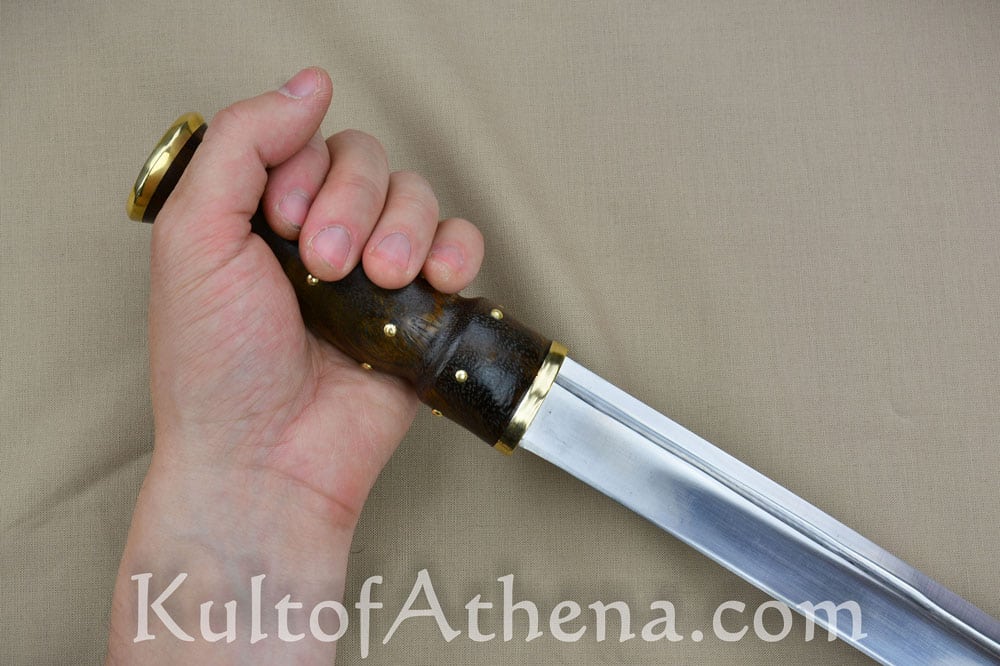
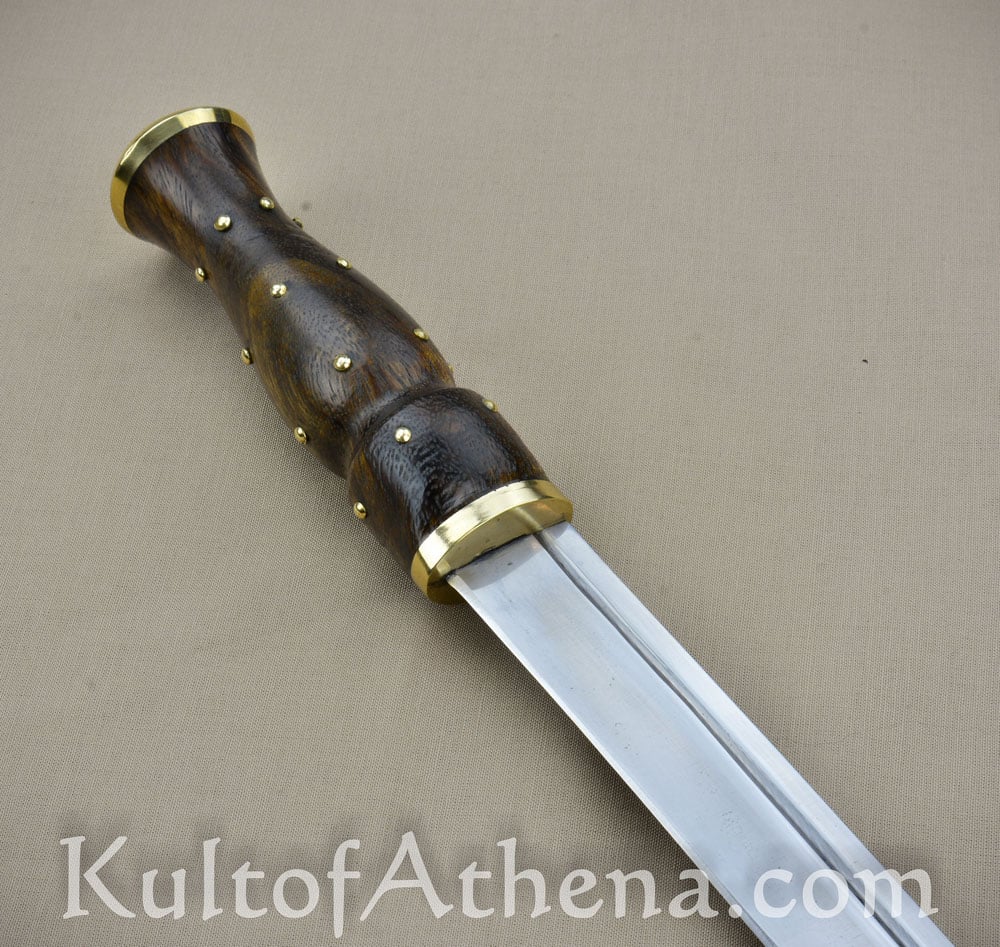



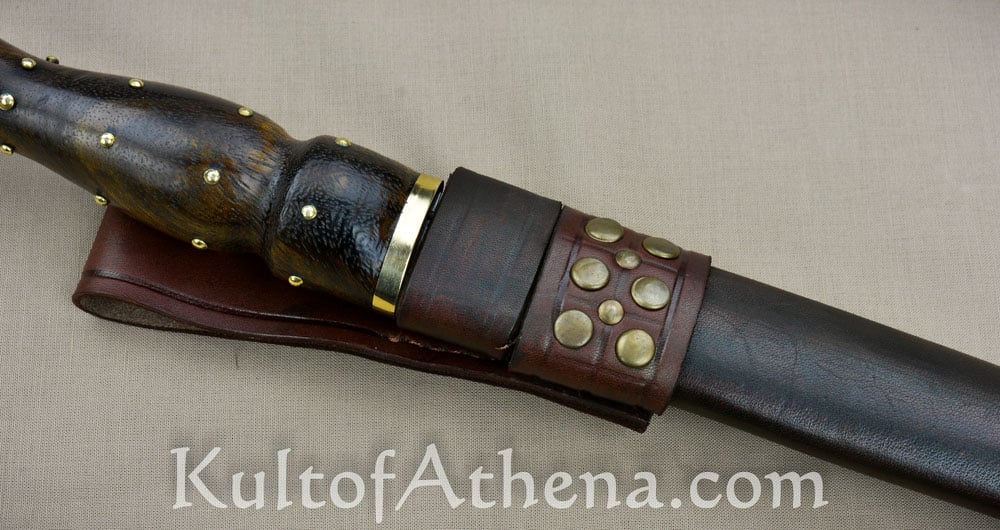
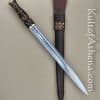

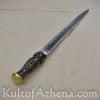
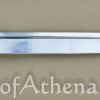
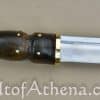
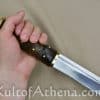
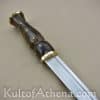
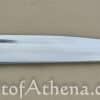
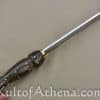
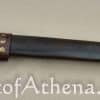
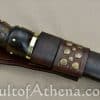
michaeldwillis1776 (verified owner) –
First the good. The Dirk itself is awesome. While not a “refined” blade and grip, that is exactly why i bought it instead of the fancy – and sometimes less expensive – versions I saw everywhere in Scotland. I have not cut with it yet, but plan on testing it soon. The edge is not as sharp as I would like, but that is actually a positive thing due to the bad – and I mean *bad* – issue.
The bad: the sheath is an absolute joke. Think thin plastic like leather and you will be on track. In no way, shape or form is the sheath made of “sturdy leather”. At BEST, it is badly treated, 1 or 2 ounce leather I wouldn’t use on any project, except maybe as filament or decorative highlight. Its badly formed to the blade, meaning the cutting edge of the blade constantly rubs against it, and, being so thin, it will 100% cut through it eventually. It is also incredibly floppy. So much so, I would call it more a hazard than a safety feature. I am constantly worried I will slice my hand open replacing the dirk. I will be making my own sheath before I wear that flimsy, bad looking piece of garbage with my kilt.
As it stands, if you want an awesome, primitive Scottish Dirk that looks like something a highland warrior would ACTUALLY have carried, absolutely, buy this dirk. If you are buying it to wear or carry as part of a traditional Highland dress or kilt, even to a Renn Faire? Unless you are willing to make your own sheath or.have one made, skip it and buy something else, because this sheath is absolutely that bad.